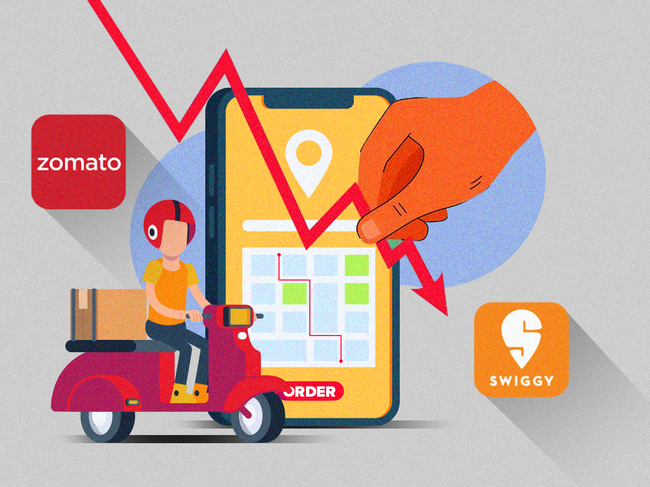 ETtech
ETtechIn fiscal 2024, Zomato’s average monthly transacting user base grew 8% year-on-year to 18.4 million. The pace of growth was 16% in the previous fiscal year.
In the first six months of 2023, Swiggy recorded 17% on-year growth in gross merchandise value (GMV) for food delivery, compared with 40% growth in the same period of 2022, as per data released by its largest investor, Prosus.
A senior Zomato executive said the company is focusing on pushing order frequencies, instead targeting the “more expensive” new customer acquisition.
 ETtech
ETtechDiscover the stories of your interest

Over the last few quarters, Zomato has introduced a multitude of new features and use-cases for food delivery. These include the controversial vegetarian-only mode, larger orders, healthy ordering options, expanding Zomato Everyday, and a number of smaller feature tweaks on the app such as “desk-friendly” options.
“Our Gold programme has also contributed significantly to increasing order frequency,” the executive said. Erosion in margins from discounts and free deliveries under the Zomato Gold subscription programme is being offset by increase in advertising revenue and platform fees that the company levies, the executive added.
Both Zomato and Swiggy levy a Rs 5 per order platform fee to their users of food delivery.
Also read | Zomato logs fourth straight quarter of profit at Rs 175 crore
Swiggy, too, has introduced new features and options to capture a wider set of use cases for existing as well as new consumers. These include low-priced food options under ‘Pockethero’. The Bengaluru-based company has also partnered with IRCTC to deliver food on trains.
Zomato and Swiggy did not respond to email queries sent by ET.
A balancing act
The duopolistic food delivery space is currently dominated by Gurgaon-based Zomato with a 55% market share, according to a March note by the Bengaluru-based firm’s investor Baron Capital.
Analysts and industry insiders pointed out that while both companies are increasing their focus on their quick-commerce businesses – Zomato’s Blinkit and Swiggy-owned Instamart – in food delivery, they are now chasing a balance between growth and profitability.
“Neither of the companies are burning excessive cash to grow as they did a few years ago to grab higher market share…that combined with macro headwinds is proving to be a drag on user growth,” a Mumbai-based analyst at a global brokerage firm said.
Even during the Indian Premier League cricket tournament – typically when companies spend significantly on advertising and marketing – the growth this year was muted compared to previous years.
A research note by brokerage firm Citi said Zomato’s daily average user growth on Android in the first 30 days of the IPL season this year came in 6% – slower than the growth witnessed in the 2022 and 2023 seasons.
Elara Capital’s senior vice president Karan Taurani said that Zomato’s focus is now to create a blend between growth and profitability.
“We’ve seen in the case of Zomato that the margins over the last 4-5 quarters have moved up significantly from a breakeven point to 3.3% Ebitda,” he said.
“For all internet companies, user growth, which was earlier in the range of 20-25% has now come down to 10-15%. Internet and ecommerce companies are not able to drive heavy user growth as they focus more on profitability. Many of them are not trying to grow users because that would be margin dilutive in nature,” Taurani added.
Notably, the food delivery space has also seen the entry of government-backed Open Network for Digital Commerce (ONDC), which has enabled large internet players such as Magicpin, Ola and Paytm to offer food delivery on their apps.
In a consumer survey published by Bank of America Global Research earlier this month, the firm said that 60% of those surveyed have used ONDC apps for ordering food and will continue to do so in the future. Only 11% of those who used the service did not like the experience, it said.
















 Get Unlimited Access to The Economic Times
Get Unlimited Access to The Economic Times
